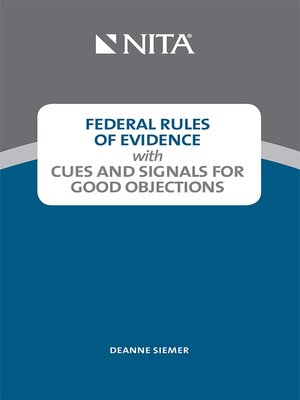
Sign up to save your library
With an OverDrive account, you can save your favorite libraries for at-a-glance information about availability. Find out more about OverDrive accounts.
Find this title in Libby, the library reading app by OverDrive.



Search for a digital library with this title
Title found at these libraries:
| Library Name | Distance |
|---|---|
| Loading... |
Knowing the technical bases for objections is not so difficult. Law school covers that. What is much harder is recognizing a good objection very quickly when your opponent puts a question to a witness or starts using a document.
This handy guide identifies the "cues" to listen for when your opponent asks a question or the witness gives an answer. These words or phrases that are the "cues" that tell you instantly that you likely have a good objection. When you know the cues, you can object rapidly and successfully. For documents, this guide also provides the "signals" that support a useful objection. For example, many lawyers miss the objection to "lay opinion" when the writer of a document gives his own view of why something happened.
Cues and Signals gives you details on every objection that has been recognized in federal courts and sorts out the high-payoff objections from those of lower priority for both oral testimony and exhibits. Everything you need on objections is in one compact volume.
This eBook features links to Lexis Advance for further legal research options







